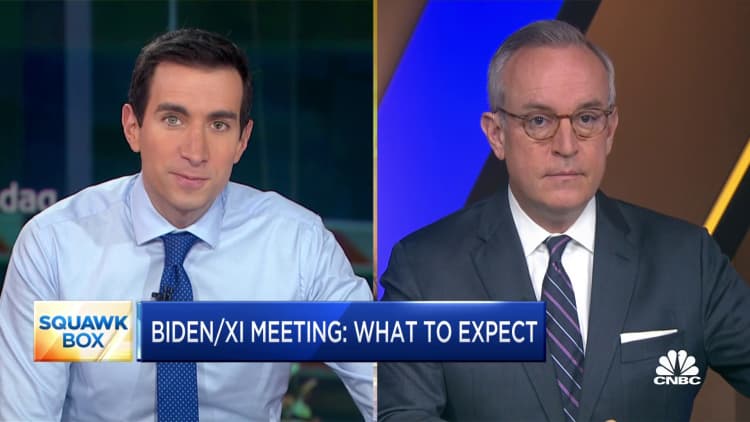C
Kevin Frayer | Getty Images News | Getty Images
As President Biden meets with Chinese President Xi Jinping in San Francisco, the Asian manufacturing sector is experiencing a slowdown not seen since the 2020 peak of the Covid pandemic.
According to GEP’s Global Supply Chain Volatility Index, Asia’s suppliers are seeing the largest rise in idle capacity since June 2020 as the region’s economy remains soft, and amid sluggish demand from the U.S. market where consumers are pulling back on spending.
The GEP Global Supply Chain Volatility Index, produced by S&P Global and GEP, tracks supply chain orders which show rising spare supplier capacity as a result of a pullback in global demand. Transportation costs were also a factor.
Some recent data coming out of China has shown economic improvement, from third quarter GDP to retail sales, and the International Monetary Fund recently raised its outlook for the economy based on new support measures from the government amid real estate sector debt issues and high youth unemployment. But trade, which is a forward-looking indicator of a country’s economic health, is fueled by manufacturing. The GEP index shows a depressed level of demand for raw materials, components, and commodities since manufacturing orders are down.
The data is in line with other recent checks on manufacturing orders for the remainder of 2023 and 2024, including the CNBC Supply Chain Survey, in which logistics companies warned of a continuing freight recession until at least the middle of 2024.
According to GEP, conditions remain negative and global purchasing activity fell again in October, at a pace similar to what was recorded mid-year. An increase in supplier spare capacity can also be seen rising modestly in North America.
U.S.-China talk on trade and tariffs
John Piatek, vice president of supply chain consulting at GEP, said trade tensions between the U.S. and China will further impair demand and create lose-lose scenarios.
“Business leaders are watching to see if the two leaders signal smoother times ahead,” Piatek said of the Biden-Xi meeting planned for Wednesday. “A positive meeting would go a long way to pausing or slowing some of the growing re-shoring trends. A negative meeting would signal that firms may need to act faster to get in front of an evolving and changing U.S.-China relationship by adjusting their supply chain strategies.”
Piatek said among other issues to be covered by the world leaders, the U.S. and China are expected to focus on kickstarting demand by removal of trade barriers and sanctions, and lowering the cost of doing business with each other.
Tariffs on select Chinese goods were imposed in three stages between 2018 and 2022. China retaliated quickly in 2018 with both sides sharply increasing tariffs. The initial round saw average U.S. tariffs increase from 3.8 percent to 12 percent, and China’s average tariffs increased from 7.2 percent to 18.3 percent.
Presently, 66.4% of U.S. imports from China are under tariff. The average U.S. tariff on Chinese exports is set at 19.3%. That is more than six times higher than before the trade war began. Chinese tariffs cover 58.3% of U.S. exports at an average of 21.1 percent.
“As much as business leaders talk about re-shoring, the reality is that China is a huge, reliable, and cost-effective partner,” Piatek sad. “Business leaders want to see a positive meeting between Biden and Xi as this partnership is a safer bet than ripping out manufacturing assets and moving supply chains to riskier parts of the world.”
Jon Gold, vice president, supply chain and customs policy at the National Retail Federation, said the ongoing trade dispute continues to have an impact on retailers of all sizes. The NRF continues to call on the Biden Administration to restart a dialogue with China about the tariffs and ultimately remove them.
“The uncertainty surrounding the Section 301 tariffs, and especially the exclusions, poses a challenge for retailers who are planning months and sometimes years in advance,” Gold said. “The tariffs contribute to additional costs that retailers are either forced to absorb or pass along to consumers. While many retailers have been looking to diversify their supply chains, it takes significant time to shift sourcing.”

 EU News Digest Latest News & Updates
EU News Digest Latest News & Updates



